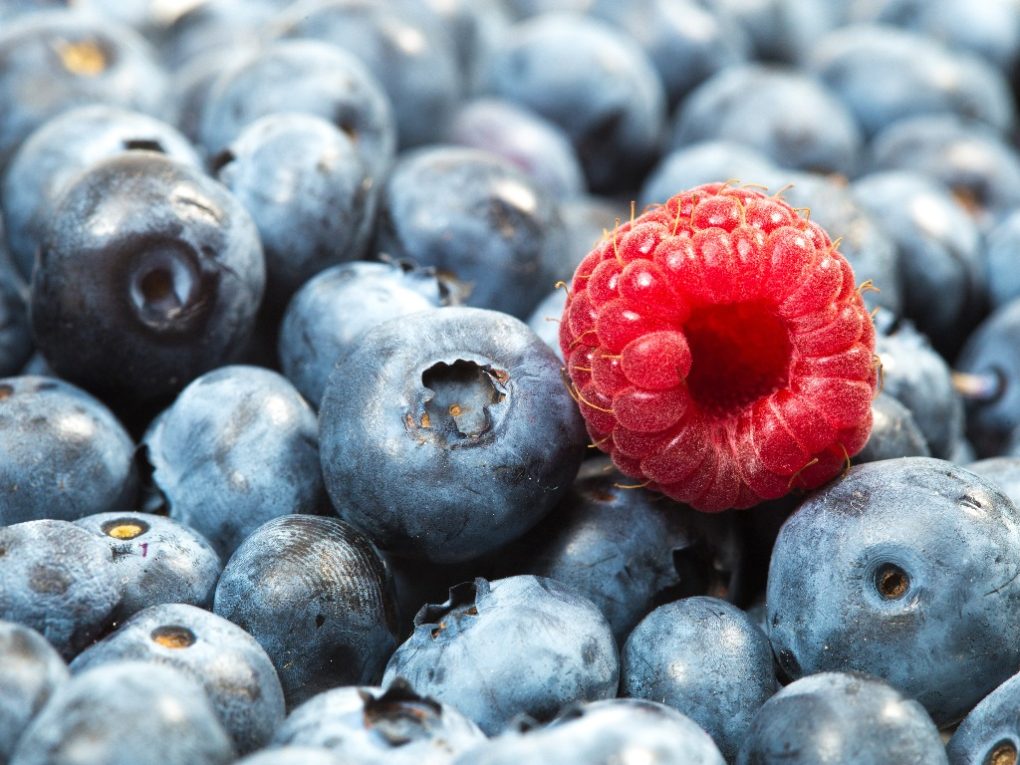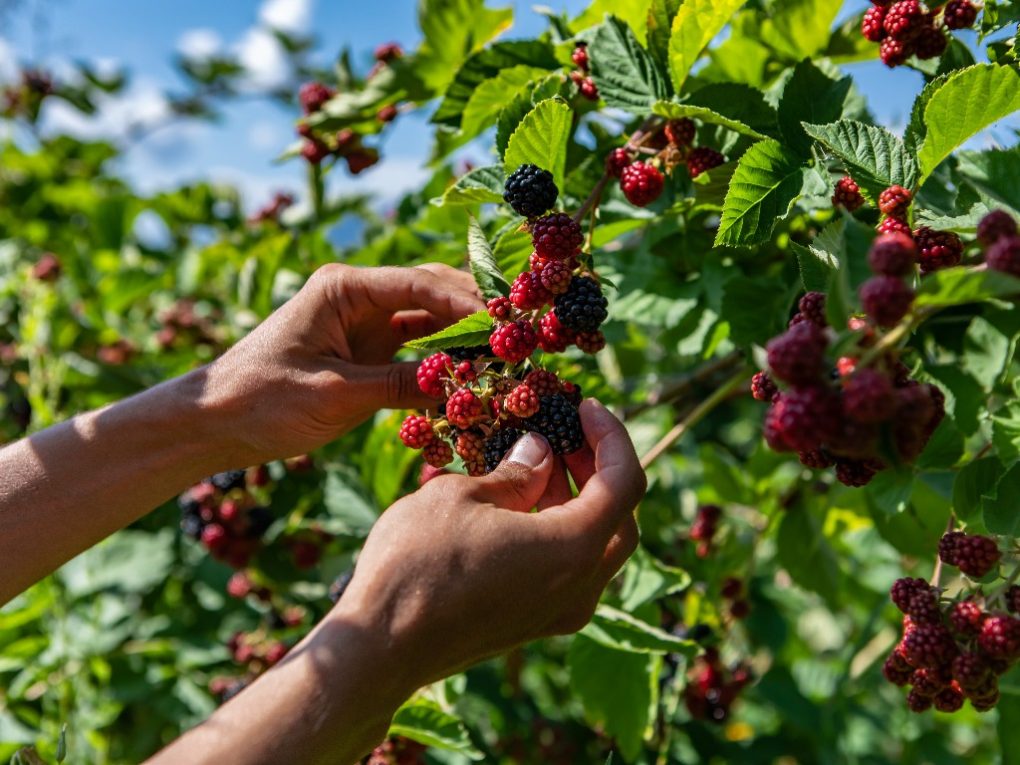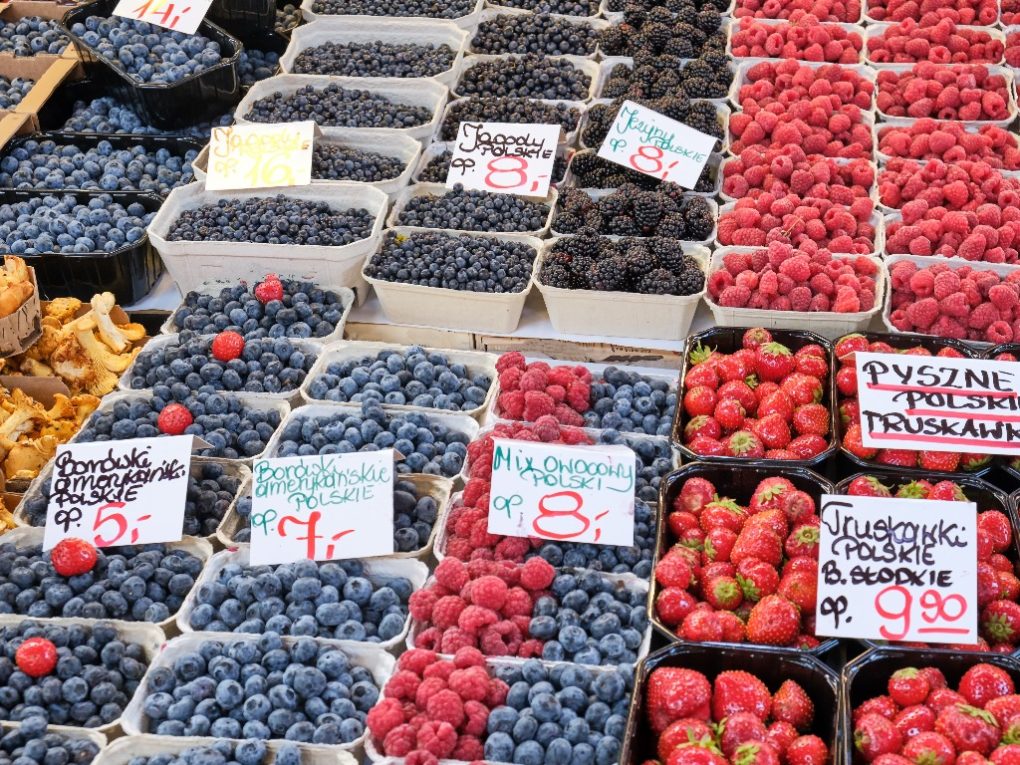Blueberries vs. Raspberries: Which Berry is Healthier
Blueberries and raspberries are two of the most popular berries in the world. They are delicious and nutritious but differ in taste, appearance, and nutritional value. Blueberries are small, round berries with a blue-purple color, while raspberries are conical-shaped fruits with a red color. Both berries are packed with vitamins, minerals, and antioxidants essential for good health.

Regarding nutritional value, raspberries are higher in fiber than blueberries. For example, one cup of raspberries contains 8 grams of fiber, 31% and 21% of the daily recommended fiber intake for women and men, respectively.
On the other hand, one cup of blueberries contains 4 grams of fiber. Blueberries, however, are higher in vitamin C and contain more antioxidants than raspberries. In addition, antioxidants protect the body against free radicals, which can damage cells and contribute to aging and disease.
Adding these berries to your diet can help boost your immune system, improve digestion, and reduce the risk of chronic diseases such as heart disease, diabetes, and cancer. Whether you prefer blueberries or raspberries, both are a great choice for a healthy snack or an addition to your favorite recipe.
Table of Contents
Nutritional Comparison
Blueberries and raspberries are considered superfoods due to their high nutritional value, confirming with Healthline. They are both low in calories and high in fiber, making them an excellent addition to any diet. However, upon adding them to my diet, I’ve noticed differences.
When comparing the two berries, blueberries have a slightly higher calorie count, 57 kcal per 100g, compared to raspberries’ 52 kcal per 100g. Blueberries also contain more carbohydrates, with 14.49g per 100g compared to raspberries’ 11.94g per 100g. However, raspberries have a higher protein content, 0.74g per 100g, compared to blueberries’ 0.66g per 100g.
Both berries are excellent sources of vitamin C, with raspberries containing 26.2mg per 100g and blueberries containing 9.7mg per 100g. They also contain other important vitamins and minerals, such as vitamin K, manganese, and antioxidants like anthocyanins.
Culinary Uses
Both raspberries and blueberries are versatile and delicious fruits that can be used in various culinary applications. They can be used in sweet and savory dishes and often in baking, desserts, and breakfast dishes. Here are some common culinary uses for both berries:

Raspberries
- Raspberry sauce or coulis for desserts and ice cream
- Raspberry jam or jelly for toast and pastries
- Raspberry vinaigrette for salads
- Raspberry smoothies and shakes
- Raspberry sorbet and ice cream
- Raspberry muffins, scones, and other baked goods
Raspberries are also a great addition to savory dishes, such as:
- Raspberry-glazed pork or chicken
- Raspberry salsa for fish or shrimp tacos
- Raspberry and balsamic reduction for steak
Blueberries
Blueberries are also incredibly versatile and can be used in various dishes. Here are some common culinary uses for blueberries:
- Blueberry muffins, pancakes, and waffles
- Blueberry pie, cobbler, and crisp
- Blueberry jam or jelly for toast and pastries
- Blueberry smoothies and shakes
- Blueberry sauce for desserts and ice cream
- Blueberry barbecue sauce for grilled meats
Blueberries are also a great addition to savory dishes, such as:
- Blueberry and goat cheese salad
- Blueberry and balsamic-glazed salmon
- Blueberry and chipotle chicken
Growing and Harvesting
Both blueberries and raspberries can be grown at home with a little effort and patience. Here are some tips to help ensure a successful harvest:

Blueberries
- Plant blueberry bushes in acidic soil with a pH between 4.0 and 5.0.
- Choose a sunny location with well-draining soil.
- Space blueberry bushes 6 feet apart to allow for proper growth and air circulation.
- Water blueberry bushes regularly, especially during dry spells.
- Fertilize blueberry bushes with a balanced fertilizer in the spring.
- Prune blueberry bushes in late winter or early spring to remove dead or diseased wood and to shape the bush.
- Harvest blueberries when fully ripe, usually in mid to late summer. Ripe blueberries are plump, firm, and have a dusty blue color.
Raspberries
- Plant raspberry bushes in soil that is well-draining and rich in organic matter.
- Choose a sunny location with good air circulation.
- Space raspberry bushes 2 to 3 feet apart in rows 6 feet apart.
- Water raspberry bushes regularly, especially during dry spells.
- Fertilize raspberry bushes with a balanced fertilizer in the spring.
- Prune raspberry bushes in late winter or early spring to remove dead or diseased wood and to shape the bush.
- Harvest raspberries when fully ripe, usually in mid to late summer. Ripe raspberries are plump, juicy, and have a deep red color.
Following these tips, home gardeners can enjoy a bountiful harvest of fresh, delicious blueberries and raspberries.
Availability and Cost
Blue and raspberries are popular fruits in the United States, and their availability and cost have changed. According to USDA data, fresh blueberry and raspberry per-capita availability at the retail level has more than doubled in the past decade, with blueberries being more widely available than raspberries.

In terms of cost, blueberries have risen in recent years. For instance, in week 7 of 2021, the average price of conventional blueberries was $7.60 per kilo, 24 percent higher than in 2020, when the average price was $6.14 per kilo. On the other hand, raspberries have been relatively stable in price, with an average price of $5.50 per kilo in 2021.
One factor that affects the availability and cost of blueberries and raspberries is their growing season. Blueberries are typically harvested from May to August, while raspberries are harvested from June to October. This means that blueberries are more readily available during the summer, and their price may be lower. However, raspberries may be more available and cheaper during the fall months.
Another factor that affects the cost of blueberries and raspberries is their production and imports. The production and imports of blueberries have been increasing rapidly to meet year-round consumer demand, while the production and imports of raspberries have been more stable. This may explain why blueberries are generally more expensive than raspberries.
